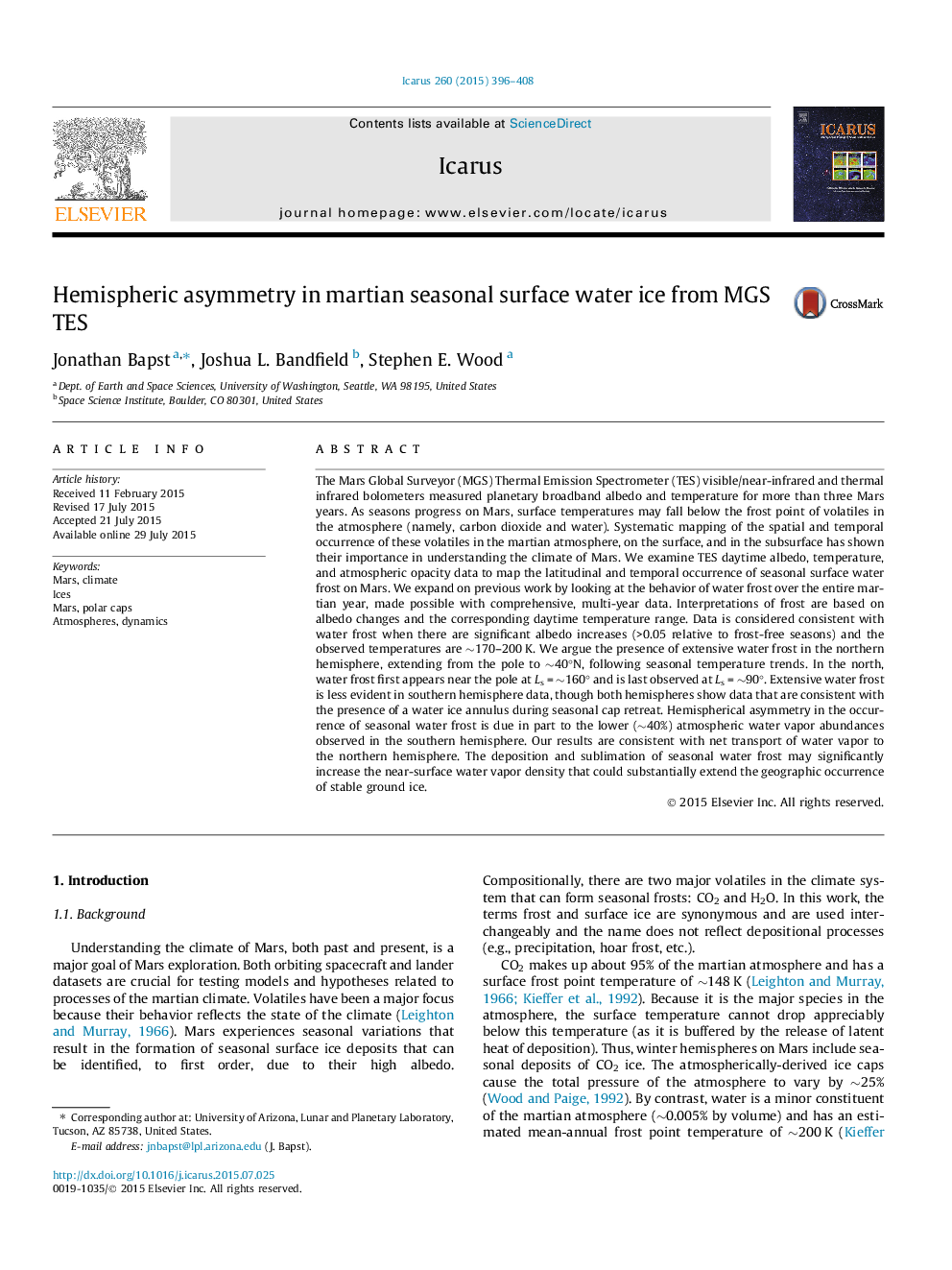| Article ID | Journal | Published Year | Pages | File Type |
|---|---|---|---|---|
| 8136087 | Icarus | 2015 | 13 Pages |
Abstract
The Mars Global Surveyor (MGS) Thermal Emission Spectrometer (TES) visible/near-infrared and thermal infrared bolometers measured planetary broadband albedo and temperature for more than three Mars years. As seasons progress on Mars, surface temperatures may fall below the frost point of volatiles in the atmosphere (namely, carbon dioxide and water). Systematic mapping of the spatial and temporal occurrence of these volatiles in the martian atmosphere, on the surface, and in the subsurface has shown their importance in understanding the climate of Mars. We examine TES daytime albedo, temperature, and atmospheric opacity data to map the latitudinal and temporal occurrence of seasonal surface water frost on Mars. We expand on previous work by looking at the behavior of water frost over the entire martian year, made possible with comprehensive, multi-year data. Interpretations of frost are based on albedo changes and the corresponding daytime temperature range. Data is considered consistent with water frost when there are significant albedo increases (>0.05 relative to frost-free seasons) and the observed temperatures are â¼170-200 K. We argue the presence of extensive water frost in the northern hemisphere, extending from the pole to â¼40°N, following seasonal temperature trends. In the north, water frost first appears near the pole at Ls = â¼160° and is last observed at Ls = â¼90°. Extensive water frost is less evident in southern hemisphere data, though both hemispheres show data that are consistent with the presence of a water ice annulus during seasonal cap retreat. Hemispherical asymmetry in the occurrence of seasonal water frost is due in part to the lower (â¼40%) atmospheric water vapor abundances observed in the southern hemisphere. Our results are consistent with net transport of water vapor to the northern hemisphere. The deposition and sublimation of seasonal water frost may significantly increase the near-surface water vapor density that could substantially extend the geographic occurrence of stable ground ice.
Related Topics
Physical Sciences and Engineering
Earth and Planetary Sciences
Space and Planetary Science
Authors
Jonathan Bapst, Joshua L. Bandfield, Stephen E. Wood,
